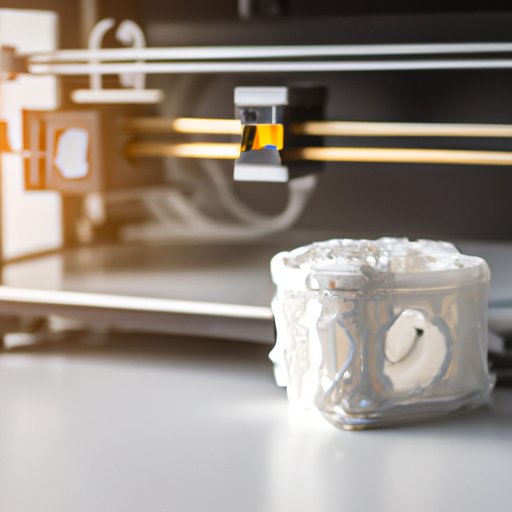Introduction
Prototyping is an important part of the product development process, allowing businesses to quickly design and test new products. It can be a great way to get started in the world of product development and create a successful business. This article will explore the steps involved in starting a prototyping business and provide advice on how to secure necessary equipment and supplies.
Definition of Prototyping
Prototyping is the process of creating a working model or prototype of a product or system to test its functionality and features. It allows businesses to quickly identify any potential issues with the design and make adjustments before investing in full-scale production. According to the American Society for Quality (ASQ), “prototypes enable us to understand the product better, evaluate its performance, and determine if changes need to be made.”

Overview of the Benefits of Starting a Prototyping Business
Starting a prototyping business can be a rewarding and lucrative venture. It provides the opportunity to work with cutting-edge technology and be at the forefront of product innovation. It also offers increased efficiency, faster time to market, and cost-effective solutions. By providing these services to businesses, a prototyping business can be an attractive proposition for potential customers.
Outlining the Steps Involved in Starting a Prototyping Business
The first step in starting a prototyping business is to research your target market. Consider what type of customers you would like to work with and what types of products they might be interested in. You should also research the competition in your area to ensure that there is enough demand for your services.
Once you have identified your target market, you will need to secure financing to purchase the necessary equipment and supplies. This could include a 3D printer, design software, and modeling tools. You may also need to hire additional staff to help with the prototyping process.
Finally, you will need to acquire the necessary equipment and supplies to run your business. This could involve purchasing 3D printers, computer-aided design (CAD) software, and other materials needed for the prototyping process.

Identify Necessary Equipment and Supplies for a Prototyping Business
One of the most important pieces of equipment for a prototyping business is a 3D printer. 3D printing is a process that uses plastic filament to create three-dimensional objects from a digital file. It is a fast and efficient way to produce prototypes, making it an essential tool for prototyping businesses.
In addition to a 3D printer, businesses will need design software and modeling tools. Design software allows users to create detailed designs for their prototypes, while modeling tools can help them to refine the shape and size of the product. These tools are essential for creating high-quality prototypes.

Describe the Benefits of Starting a Prototyping Business
There are several benefits to starting a prototyping business. One of the main advantages is increased efficiency. By using 3D printing and other prototyping processes, businesses can quickly create prototypes, which can then be tested and refined before mass production begins. This can reduce the time and cost associated with bringing a product to market.
Another benefit of starting a prototyping business is the ability to offer cost-effective solutions. By leveraging 3D printing and other processes, businesses can produce prototypes quickly and at a fraction of the cost of traditional methods. This can be especially beneficial for businesses on a tight budget.

Explain the Different Types of Prototyping Processes
There are several different types of prototyping processes, including rapid prototyping, additive manufacturing, and subtractive manufacturing. Rapid prototyping involves creating a prototype in a short period of time, usually within a few days or weeks. Additive manufacturing involves building up layers of material to create a prototype, while subtractive manufacturing involves removing material from a block of material to create a prototype.
Discuss the Challenges of Running a Prototyping Business
While starting a prototyping business can be highly rewarding, there are also some challenges that must be addressed. The cost of the necessary equipment and supplies can be prohibitively expensive, and the complexity of the processes involved can be difficult to manage. Additionally, there may be a lack of expertise in the field, which can make it difficult to find qualified staff.
Offer Advice on How to Market a Prototyping Business
Marketing is an important part of any business, and a prototyping business is no exception. To reach potential customers, businesses should utilize social media platforms such as Facebook, Twitter, and Instagram. They should also establish a website to showcase their services and network with industry professionals to spread the word about their business.
Conclusion
Starting a prototyping business can be a great way to get involved in the world of product development. By understanding the steps involved in starting a business and identifying the necessary equipment and supplies, businesses can be well on their way to creating a successful business. Additionally, by understanding the benefits and challenges of running a prototyping business and utilizing marketing strategies, businesses can increase their chances of success.
(Note: Is this article not meeting your expectations? Do you have knowledge or insights to share? Unlock new opportunities and expand your reach by joining our authors team. Click Registration to join us and share your expertise with our readers.)
